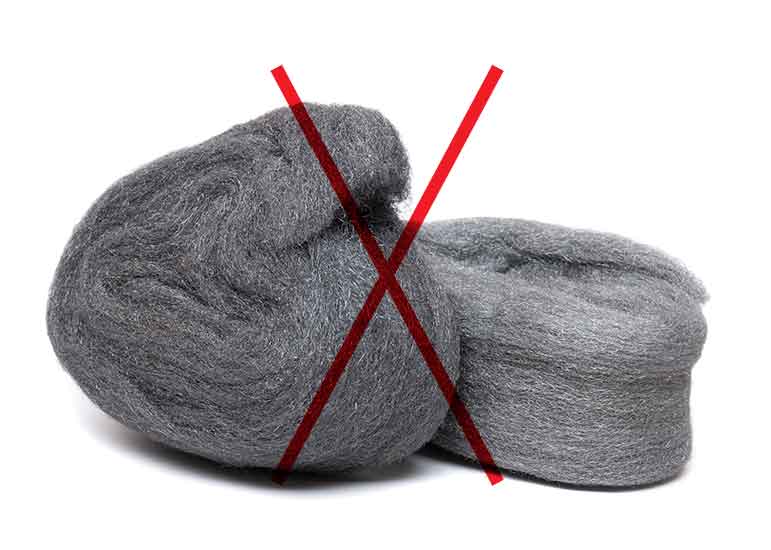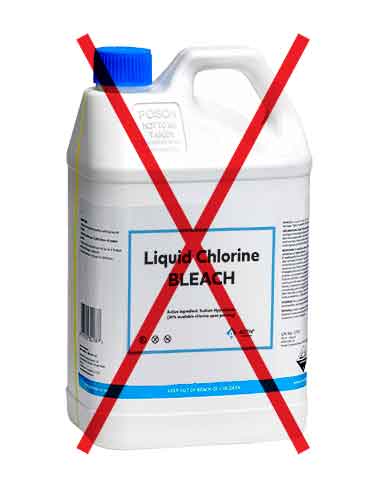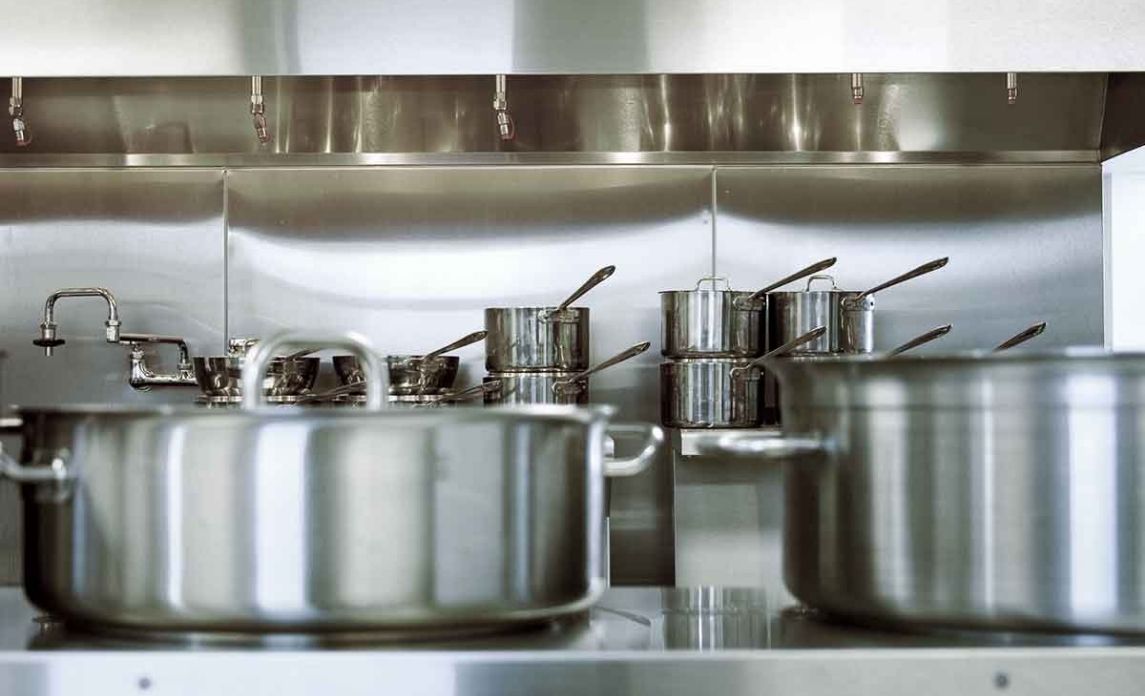Keeping commercial environments clean and tidy is a big job. In particular, commercial kitchen areas such as in bars, restaurants, or cafes require thorough and frequent cleaning in order to keep food preparation safe for the public. Maintaining clean stainless steel surfaces is a huge task. Commercial kitchens will often be home to a lot of stainless steel surfaces and appliances. While this is a durable and resilient material, it can become dull, dirty, and scratched if it is not cleaned and maintained with proper care.
So, let’s take a closer look at stainless steel, and how to clean and maintain it in busy commercial environments:
About stainless steel
Stainless steel is an incredibly common and popular material that is used for appliances, cooking utensils, benchtops, tapware, and a whole lot more. It is used for many different purposes due to its excellent corrosion resistance.
Stainless steel is a universal name for various types of steel – their common element being a minimum percentage of 10.5% chromium. The chromium reacts with oxygen in the air to form an invisible but strong surface layer (chromium oxide), which prevents rust and staining on the surface of the steel. It does not react with or transfers to any other material or surface, and if damaged it can ‘self-renew’ by more chromium being exposed to the air and creating more chromium oxide.
Interior
Grease and dirt will quickly accumulate on stainless steel surfaces and appliances in a busy commercial setting. If there are any major spills or messes made, be sure to clean them up straight away to prevent a more difficult cleaning job later down the line.
Daily cleaning with soap or detergent and warm water will usually be sufficient for regular dirt and grime build-up. More abrasive cleaners can scratch or otherwise cause damage to polished stainless steel. Once you have cleaned the surface, you should rinse it using a clean, damp cloth. If any detergents or cleaners remain on the surface of the steel for too long, it could tarnish the steel. Finish up by using a dry cloth to remove any excess moisture.
Try to wash and wipe in the direction of the steel finish. If the steel has a textured finish, you could use a soft nylon brush to get between the ridges on the texture to remove any trapped dust or dirt.
Using a soft and dust-free cloth is best for the steel and won’t cause any markings on the surface. Fingerprints can create an unsightly appearance on stainless steel, especially if it has been finished with a mirror-polish effect. Using glass cleaner on the steel is a good way to remove oily fingerprints while still protecting the steel from any damage. It should also be noted that when stainless steel is first installed, it will require a thorough initial clean to get rid of any dust or adhesives from the installation.

Exterior
Stainless steel can be found on the outside of many buildings, fulfilling a range of different purposes. It could be used for wall claddings, window trimmings, door handles, hinges, roofing, or solar panels. Its high resilience against rust and corrosion makes it reliable for external use in even the harshest of weather conditions.
Rust damage or discolouration to stainless steel on the exterior of buildings and structures most commonly happens when there is close proximity to beaches and coastlines. Taking care of steel is especially important in these areas because the salt air can rapidly compromise the resilience and strength of the material. In order to clean stainless steel, it must be washed a minimum of once a month if you live within 5 kilometres of the ocean. This will help to keep salt deposits to a minimum and help the steel to maintain its strength and good appearance.
You should never use harsh chemicals and acids such as hydrochloric or hydrofluoric acid. These substances are sometimes used to clean brick or stone structures but should not be used on any steel or metal surfaces. Oil-based cleaners should also be avoided on the exterior of buildings as they leave behind a filmy layer on the steel.

Handy hints for clean stainless steel surfaces
You should never use harsh chemicals and acids such as hydrochloric or hydrofluoric acid. These substances are sometimes used to clean brick or stone structures but should not be used on any steel or metal surfaces. Oil-based cleaners should also be avoided on the exterior of buildings as they leave behind a filmy layer on the steel.

You should also not use metal bristled brushes or steel wool pads. Particles of the carbon steel from metal brushes and wool pads can be left behind which can create rusts stains.

If it is deemed necessary, ammonia-based cleaners can be used but chlorine-based products are not recommended, as chlorine breaks down the chromium layer and results in damage to the steel
If you want professional help to keep your commercial environment clean and healthy, talk to Crewcare today. We can provide expert and reliable commercial cleaning services for restaurants, cafes, schools, offices, retail stores, and more. We also offer one-off services for those bigger jobs like carpet cleaning, floor polishing, and window cleaning.


